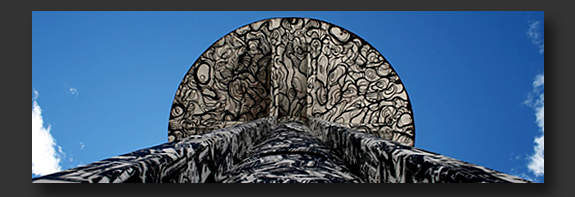
| MON | TUE | WED | THU | FRI | SAT | SUN |
|---|---|---|---|---|---|---|
| 1 | 2 | 3 | 4 | 5 | 6 | |
| 7 | 8 | 9 | 10 | 11 | 12 | 13 |
| 14 | 15 | 16 | 17 | 18 | 19 | 20 |
| 21 | 22 | 23 | 24 | 25 | 26 | 27 |
| 28 | 29 | 30 | 31 |

11/02/2008

PRESS RELEASE
MANIFESTA 7, THE EUROPEAN BIENNIAL OF CONTEMPORARY ART

PRESS RELEASE
Manifesta 7, the European Biennial of Contemporary Art, which for the first time took place in Italy, formally came to an end on November 2, 2008 after a period of 111 days of intense activity. Manifesta 7 was curated as a collaborative effort by three teams, consisting of Adam Budak, Anselm Franke / Hila Peleg and Raqs Media Collective, and was organised by a large international team, which was managed by Hedwig Fijen, Andreas Hapkemeyer and Fabio Cavallucci. Manifesta 7 attracted more than 108,000 visitors.
The positive response to Manifesta 7 has been confirmed by the presence of numerous, different audience groups, as well as the widespread coverage in the local, national and international press. Art critics have described this edition as the best Manifesta so far. 1,615 journalists from Italy and abroad registered to visit the Manifesta 7 exhibitions. These events showcased painting, sculpture, video, installation and sound works, the majority of which were specially conceived for the occasion by 230 participating artists, architects and writers from around the world.
To date, more than 1,300 articles have been published (1,050 Italian and 250 international). Radio and TV stations at local and international level have reviewed the show, in a broad range of programmes and contexts. Particular attention was placed on the organisation of the Parallel Events, which featured more than 100 artistic projects developed in the local region of the Dolomites. Manifesta 7 stretched across an entire regional territory, encompassing seven venues, covering more than 16,000 square metres of exhibition space in four cities: Fortezza, Bolzano/Bozen, Trento and Rovereto. As such, it is bound to leave its mark, and it has already drawn attention to the restoration of monuments and former-industrial buildings, which are now available as purpose-built venues for cultural practices for the local community and beyond.
“Manifesta 7 is the edition in which our project has truly merged with the local communities,” says Hedwig Fijen, director of the International Foundation Manifesta and Director of Manifesta 7. “This is confirmed by the enthusiastic participation at local, national and international level in artistic and educational activities. Again, this underlined Manifesta’s principle aim to authentically integrate with the local region, yet to create a dynamism that reaches far beyond.”
For the first time in its history, Manifesta embraced not a single city, but a whole region. This new approach is not only a matter of challenging logistics, it also focuses on how a vast contemporary art event with a thematic vision can be directly related to the geopolitical and social history of local communities, creating a real commitment to the territory. An Education Department was also created for the first time, and it was animated by 20 art mediators. The Education Department has organised about 1,000 workshops with more than 12,270 children, students and adults attending. Another new element devised for Manifesta 7 was the inclusion of a forward-seeking group of Italian collectors, who were able to financially support the production of some of the newly commissioned works and projects, which will be included in museum or private collections. This means that some of the exhibited works will stay permanently in the region, while others are now being donated to Italian museums. By inviting these collectors to also become long-term trustees, Manifesta Foundation developed a new support tool, which contributes to the organisation’s sustainability
The three M7 publications (titled Index, Companion, and Scenarios) with texts by 124 authors were published in three languages by Silvana Editoriale in an edition of 15,000 and can be purchased still (see below).
Manifesta 7 was initiated by the Autonomous Province of Bolzano, the Autonomous Province of Trento and by the International Foundation Manifesta. Manifesta 7 was sponsored by Fondazione Cassa di Risparmio di Bolzano/Stiftung Südtiroler Sparkasse, Dutch Ministry of Education, Culture and Science, Unicredit, Dr Schaer, Seat Pagine Gialle, Vidisquare, and Zumtobel. Manifesta 7 has been generously supported by more than 30 national arts organisations from different European countries.
Image: M-City, Bolzano, 2008
_____________
Contributors
dalle nogare ag/spa, leitner AG/SPA, KPMG italia, opera universitaria die trento, niederstätter, stadt brixen/città die bressanone, stadtwerke asm – brixen/Bressanone, ute & lorenz moser, arte mundit® by ftb-remmers, greenberg traurig, papin sport, stahlbau pichler, museion, mart, prestabici, martina schullian, galleria civica di trento,
official art hotels – alto adige/südtirol
official hotels
Hotel Laurin / Hotel greif - bolzano/bozen Grand Hotel - Trento, stadt hotel città – bolzano/bozen




























































